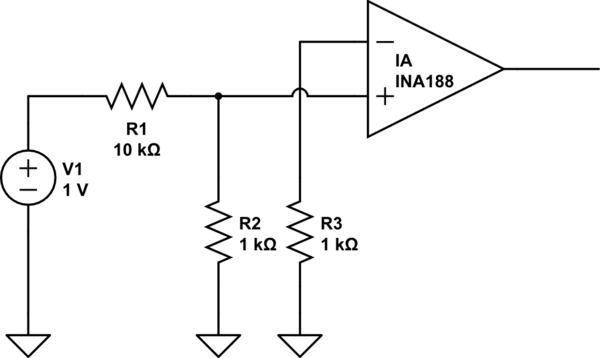I am trying to understand how the input bias currents flow in op amp and instrumentation amplifier circuits and what errors they create. I came across a circuit that looks like the following:

simulate this circuit – Schematic created using CircuitLab
My questions are:
- If I assume the bias currents flow into the terminals, which way do the bias currents go? For the positive terminal I would assume that the bias current flows from V1 through R1. But what about the negative terminal? Does the bias current flow from ground to the negative input?
- What errors do the bias currents create? Is it only the voltage drop across R1 that I need to consider?


